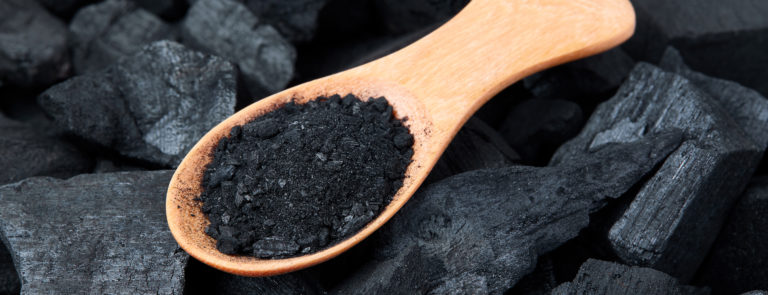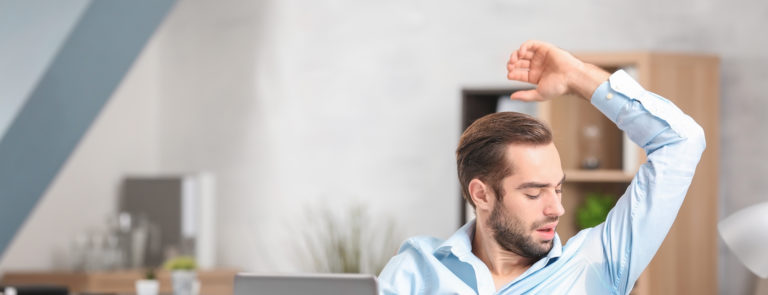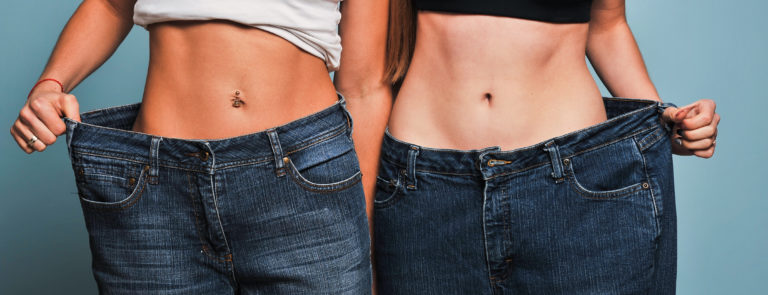10% off £35
What’s the big deal with activated charcoal?

If you’ve browsed health or beauty products at any point over the last couple of years, you’ll be familiar with activated charcoal. Once almost completely unknown in the UK, activated charcoal seems to be everywhere from our toothpaste to our water bottles.
What is this stuff – and why is it suddenly everywhere? And most importantly – should you be using it?
What is it?
Activated charcoal is known as a detoxifier. This reputation comes from its known ability in medicine to absorbs toxins from the stomach, such as if a person or animal has accidentally swallowed something toxic.1
Charcoal is familiar to most of us as the lumps or briquettes we throw onto BBQs in the summer.
Charcoal basically the black residue that forms when something with carbon - such as wood, coal or even coconut shells and fruit pits - is burned, and any water is removed.2
It’s lightweight, black and dusty in texture.
Strange though it may seem, the stuff that ends up in smoothies, face creams and toothpastes shares many of the same organic materials as BBQ charcoal – it’s just been through a few extra steps.
Activated charcoal powder, also known as activated carbon powder, is made by finely grinding charcoal.
This is then ‘activated’ by exposing it to oxygen and heat-treating it at extremely high temperatures.3
During this activation process, the carbon atoms in the charcoal are rearranged and the charcoal gains thousands of tiny holes in its surface, like the pores of our skin.
These pores give activated charcoal an almost unbelievable amount of surface area – 1ml of the stuff has around 1000sqm exposed surface.4
These pores are very absorbent, hence activated charcoal’s reputation as a toxin sponge.
But why has it found its way into our beauty products?
The rise of activated charcoal
Activated charcoal was once most commonly found in hospitals, ready to be administered to patients who had swallowed a poisonous substance.
Charcoal medicine has also long been used for intestinal gas and bloating, based on traditional use.5
Today, though, you’re likely to see activated charcoal on bathroom shelves and in kitchen cupboards across the UK.
As you will no doubt have noticed, the detox trend has been going strong for a while now. Back in 2014, Harper’s Bazaar called activated charcoal the ‘detox du jour’ and told of an emerging wellness trend in Los Angeles of consuming activated charcoal tablets and adding it to juices.6
You can buy activated charcoal at most health food shops and in chemists and shops selling wellness products.
The global activated carbon market size was estimated to be worth almost $5 in 2018 – and is expected to expand at an annual growth rate of 17.5% by 2025.7
What types of products have activated charcoal?
- Activated charcoal powder – this fine black powder is pure activated charcoal and can be added to home-made beauty products, food and drink, and taken orally
- Charcoal tablets – charcoal tablets (also charcoal capsules and charcoal pills). These are usually taken to help prevent flatulence and gas and are made from insoluble charcoal fibre. Try to go for varieties that haven’t been chemically treated – just activated using heat and oxygen.
- Charcoal toothpaste – this has been the big-ticket trend in recent years. While research is ongoing, it’s thought it absorbs the bad bacteria in your mouth which leads to plaque. Further, it is mildly abrasive so can buff away surface stains.8
- Food and drink – edible charcoal can be found in everything from smoothies and lattes to burger buns. The idea is that it will bind with toxins in the stomach, although there is a lack of studies on this. At such low levels, it’s thought that activated charcoal is unlikely to be harmful.9
- Beauty products – There’s plenty of anecdotal evidence to support the theory that products containing activated charcoal are great for drawing impurities out of skin, especially oily skin. Cleansers and face masks containing activated charcoal are definitely worth a try if you’re concerned about blemishes.
Alternatively, you could make your own with a teaspoon of activated charcoal powder mixed with coconut oil.
Try to make it with chilled coconut oil from the fridge, as if it’s room temperature it gets too runny.
A word of warning – as activated charcoal is so good at absorbing things, take care if you’re on medication as there is a possibility it might be less effective while taking charcoal by mouth. It’s always best to check with your GP first.
Last updated: 10 June 2021














